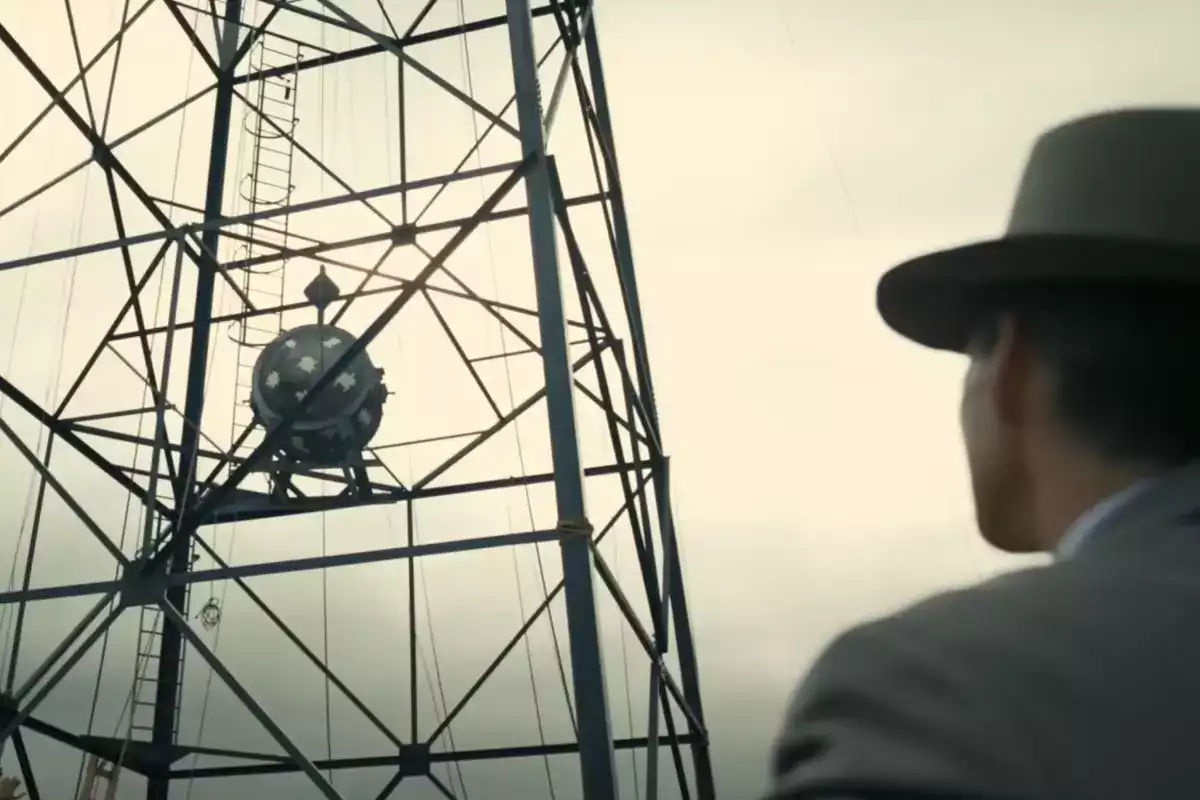Murphy gave layered portrayal of Nolan’s Oppenheimer, with his complicated interpersonal relationships with colleagues and partners, self-mythologization, and human fragility
Christopher Nolan’s latest film, the 2023 biopic Oppenheimer about the American theoretical physicist J. Robert Oppenheimer, has received 13 Academy Awards nominations, including Best Picture, Best Director, and Best Actor for its leading actor, Cillian Murphy. Emma Thomas, Charles Roven, and Christopher Nolan produced it.
After grossing USD 329 in the United States and more than USD 950 million worldwide and bringing home four awards in major categories at this year’s Screen Actors Guild (SAG) Awards on Saturday, February 24, Oppenheimer is expected to win big at the 2024 Academy Awards on Sunday, March 10.
Oppenheimer at the 96th Academy Awards
Murphy has won 2024 Best Actor category. Actors playing leading roles in biopics have been doing well at the Oscars in recent years, with Will Smith winning best actor for his role in King Richard (2021) and Rami Malek winning in 2018 with his Freddy Mercury in Bohemian Rhapsody (2018).
Murphy’s winning this year’s Oscar as best actor marks the second time in a decade that an actor wins in this category for his role playing a scientist, a theoretical physicist, to be specific. Ten years ago, in fact, British actor Eddie Redmayne won his first Oscar for his role as theoretical physicist Stephen Hawking in James Marsh’s The Theory of Everything.
Historical dramas and biographical dramas have dominated the “Best Picture” category in the 2010s with The King’s Speech (2010), the Artist (2011), Argo (2012), 12 Years a Slave (2013), and Green Book (2018) winning in this category over the past decade. The 2020s winners’ list have been more varied so far, but Oppenheimer could bring home the award given the Academy’s history of favoring larger-than-life historical movies.
Despite this, as a blockbuster released in the summer, Oppenheimer doesn’t fit the “Oscar bait” criteria. These movies appear to have been made to earn Academy Award nominations, not with the box office in mind, and released late in the calendar year.
The story behind Christopher Nolan’s Oppenheimer (2023) – Human fragility in Hollywood
Adapted from the book Kai Bird and Martin J. Sherwin biography “American Prometheus: The Triumph and Tragedy of J. Robert Oppenheimer,” the film is a non-chronological account of the theoretical physicist’s life from his days at Cambridge University until after his time at Los Alamos Laboratory, New Mexico.
The laboratory located in the Pajarito Plateau was part of the US Manhattan Project, which, under the direction of Oppenheimer, developed nuclear bombs during World War II. This research was a fundamental part of the United States’ nuclear weapons development, which cost the health of the Native population of the surrounding area and led to the death of between 110,000 and 210,000 people as a result of the 1945 bombings of Hiroshima and Nagasaki.

Human fragility at the center of Nolan’s Oppenheimer
Nolan’s 12th feature film has an extensive cast, which includes Emily Blunt, Robert Downey, Jr., Matt Damon, Rami Malek, and Florence Pugh. Still, much of the responsibility of bringing to life the human fragility, the human fluidity and the moral and political conundrums explored in Nolan’s first-person screenplay fell on the shoulders of Irish actor Cillian Murphy.
Oppenheimer’s director and Murphy’s long-established collaborative relationship started with Batman Begins in 2005 and included Nolan’s previous epic historical film Dunkirk (2017).
In their sixth collaboration, Murphy has given a layered portrayal of Nolan’s Oppenheimer, with his complicated interpersonal relationships with colleagues and romantic partners, self-mythologization, human fragility, and his attitude to the weapon of mass destruction the physicist contributed to developing. A somber, intimistic portrait of human fluidity that might earn him this year’s Oscar for best actor.
Oppenheimer, the human fluidity and fragility of the mind
The script is one of Oppenheimer’s best assets, a proof of success for a movie whose storytelling, unlike Nolan’s other large-scale features, hinges on dialogues and silences for the most part. Through small, shabby rooms, houses, laboratories, a moving train at night, and the side of a pond, what the characters say and don’t say carries the plot forward. A script that Morphy described to the British Film Institute (BFI) as «possibly the greatest screenplay I’ve read professionally,».
In Nolan’s three-hour-long blockbuster, the characters’ human fluidity is the story’s focus. The viewers see relationships and views change, and follow characters who make reckless, selfish, questionable choices and struggle with their consequences up close.
The script doesn’t say, «Oppenheimer flips a page. Continue reading his statement». It says, «I flip a page. Continue reading my statement». Close-ups abud: the movie doesn’t let the viewers look away from its displays of human fragility and human fluidity.
The women of Oppenheimer – a missed opportunity
Despite its focus on its characters and the more or less intentional remarks on the male characters’ overt and covert misogyny, Oppenheimer seems uninterested in developing its female characters. A disinterest that makes the film fail the Bechdel Test.
Throughout the movie, these women are relegated to the background, show a consistent lack of agency, and seem, for the most part, to feel the impact of the titular character’s decisions. A snub that many have pointed out as a recurring feature of the Anglo-American director’s filmography.
The sole female scientist named in the film is the Czech-American scientist Doctor Lilli Hornig, who worked at the Los Alamos Laboratory first on plutonium research and later on implosion lenses. Played by Olivia Thirlby in Oppenheimer, her character gets side-lined compared to many of the other countless secondary male characters in the movie.
In Oppenheimer, the female secondary characters aren’t the sole ones who get relegated to the sideline; they are also the main ones. In the film, the leading female characters, biologist Kitty Oppenheimer and psychiatrist Jean Tatlock, Oppenheimer’s wife and girlfriend turned mistress, are played by renowned British actresses Emily Blunt and Florence Pugh, respectively. The actresses deliver the kind of solid performances they have become known for; they do so despite the script, which gives them little room to shine.
Oppenheimer – Feeling the horror. Human fragility
Oppenheimer’s fil-rouge is its sense of horror, of foreboding. It starts with the incipit: «A sphere of fire, the fire of a thousand suns, slowly eats the night-time desert». To carry this through, the people behind the movie used all the tools at their disposal.
The Visual effects (VFX) team led by Andrew Jackson and Scott Fisher used practical effects made with the likes of water tanks, thermite and a rubber sleeve to take the viewers into the unsettling world of matter. The score’s composer Ludwig Göransson used vibratos on strings to create the film’s hunting music score, which pairs well with the movie’s ample use of dramatic irony.
While Oppenheimer’s titular character chooses for a time to look the other way from the horror he has been unleashing in his life and beyond, the film doesn’t forget.
Christopher Nolan
Christopher Nolan is a British-American filmmaker. 1998’s Following was his debut movie.



















